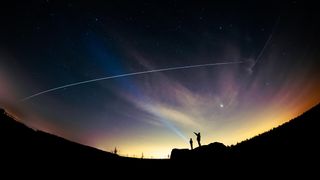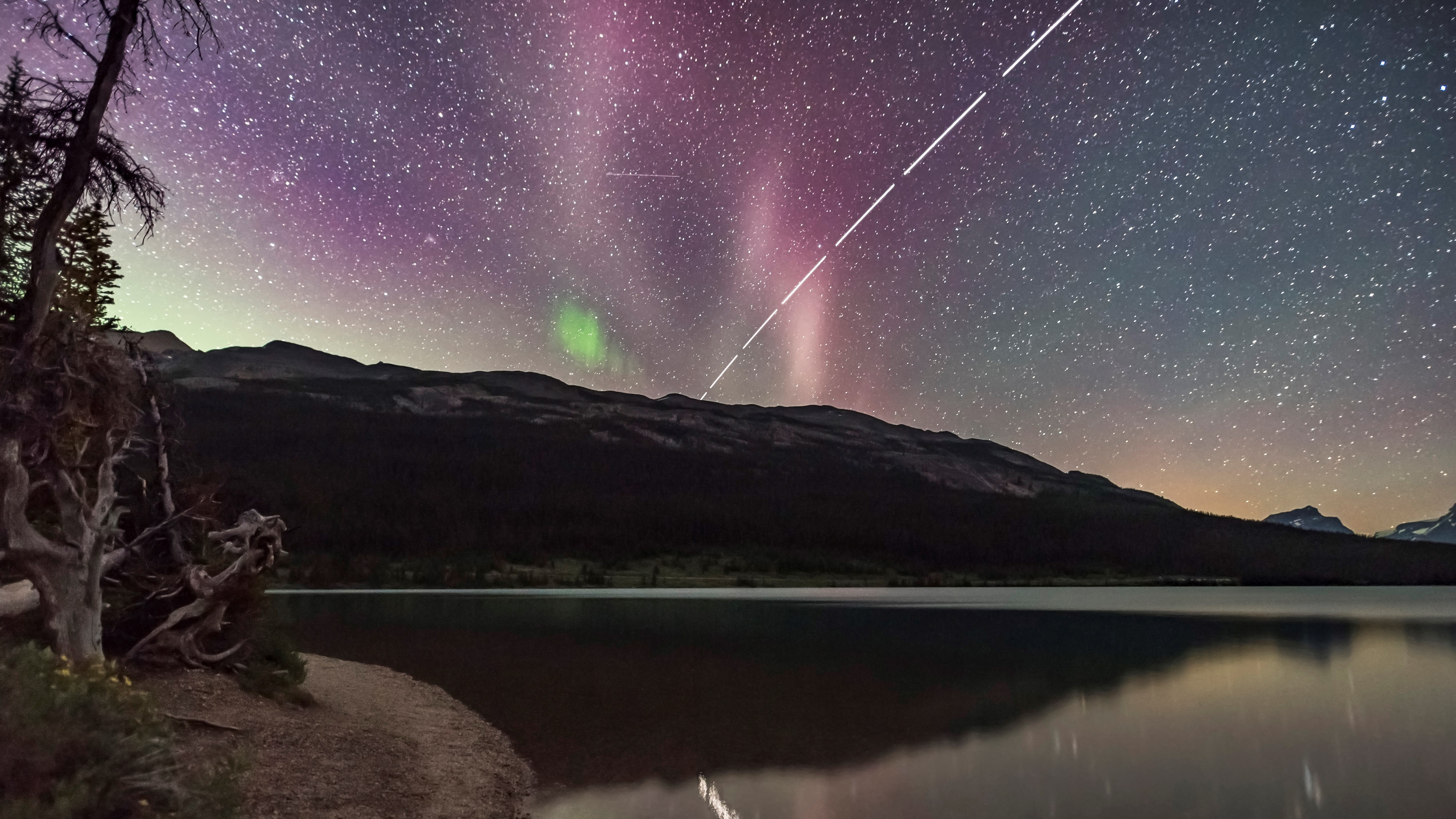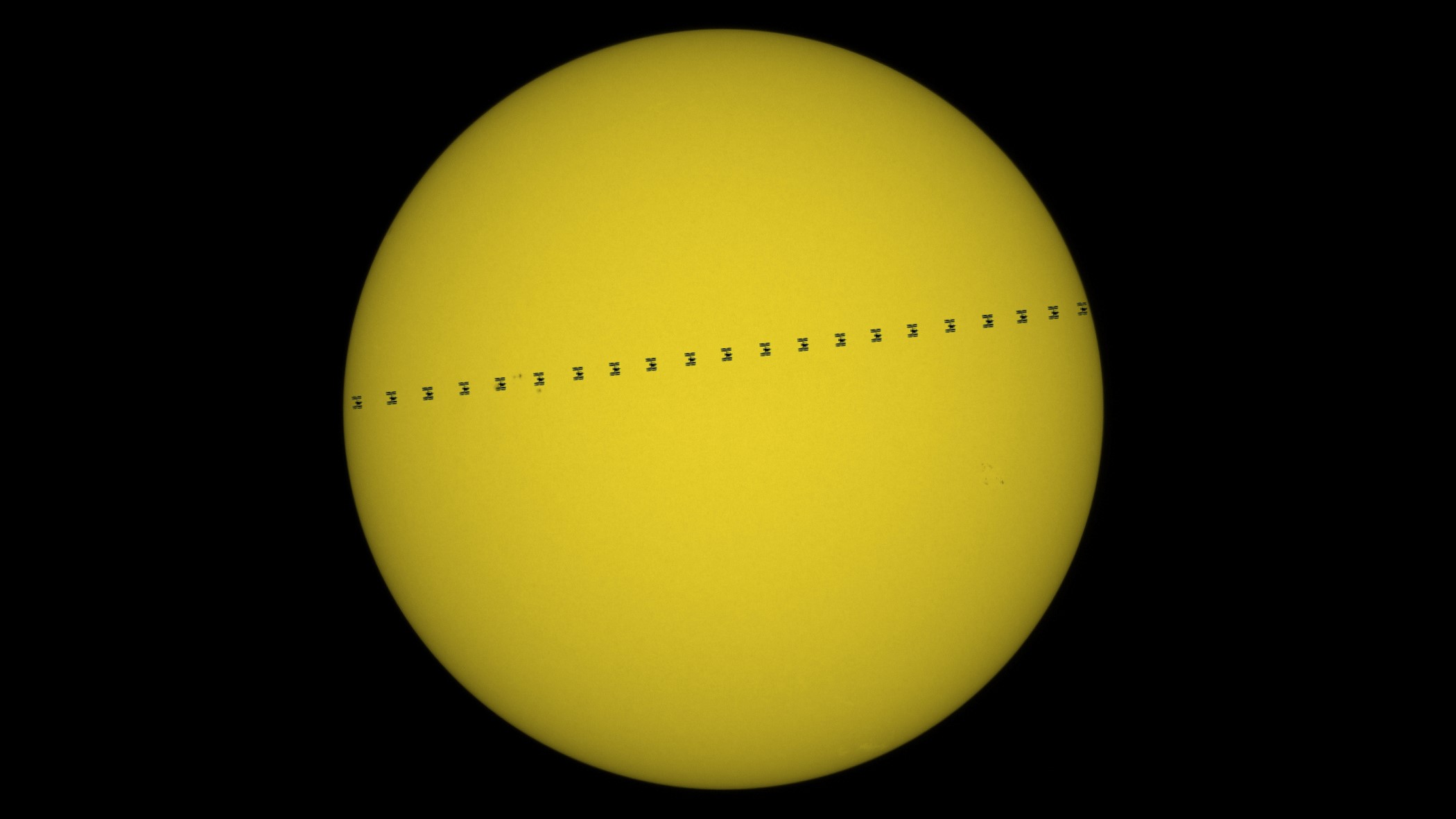When Will the Iss Be Seen Again
How to see and track the International Space Station (ISS)

The International Infinite Station (ISS) is a multi-nation laboratory, orbiting 248 miles (400 kilometers) above our heads. It perhaps comes equally no surprise that the ISS can easily exist seen and tracked from Earth.
The colossal structure reflects sunlight and appears equally a bright white pinpoint of lite in the sky. Co-ordinate to NASA, the ISS will typically exist the brightest object in the sky (except for the moon), and tin even be spotted from the heart of a city.
The ISS is therefore a dandy skywatching target for those living in urban and rural areas akin. Spotting the ISS requires no specialist equipment as it can be seen with the naked eye. All you need to know is where to await and when.
Related: Smartphone astrophotography: How to accept pictures of the nighttime sky
Where and when can I come across the International Space Station?
"The International Infinite Station's trajectory passes over more 90% of Earth's population," co-ordinate to a statement from NASA. The ISS zips around Earth at an average speed of 17,500 mph ( 28,000 km/h), completing 16 orbits per day. As the ISS orbits with an inclination of 51.six degrees, if you live beyond 51.half-dozen degrees northward or south of the equator the ISS will never appear directly overhead.
The ISS is just visible because it reflects sunlight. It isn't bright enough to be seen in the middle of the day and the best fourth dimension to view the ISS is either at dawn or dusk. Viewing opportunities of the ISS can vary between 1 sighting a month to several a week, depending on your location and the orbit of the ISS.
NASA'southward spot the station widget (beneath) is a slap-up tool for speedily finding out upcoming ISS viewing opportunities. Simply pop in the location yous wish to know for ISS sighting opportunities and let the widget work its magic. It volition tell you the time of the ISS flyover along with how long it is visible, the maximum height it volition accomplish in the heaven and which direction it will appear and disappear from your field of view.
In addition, NASA'south Spot the Station website is a great identify to explore ISS sighting opportunities in your area. Yous can even sign upward for email or text alerts for when the space station is flying over and then yous'll never miss a viewing opportunity again. Though it's worth noting you lot volition simply get NASA'due south Spot the Station alerts when the ISS is passing over with a maximum meridian of at least 40 degrees, this is considering the ISS will exist visible in a higher place most landscapes at this top.
If you would similar to know where the space station is correct now, ESA'south live map has got you covered. The informative map shows where the ISS is as well as it'due south speed and altitude.
The International Space Station from Earth

The ISS makes for a fun and interesting observing target in the night sky. With its location and movement tracked with neat accuracy also every bit night sky alerts from NASA's Spot the Station website, it's perhaps one of the easiest objects to spot in the night sky.
Related: How to photograph the ISS
Budding astrophotographers from around the world accept caught cute long-exposure photographs that show the ISS appearing to streak across the sky. To the ground observer, the ISS passing overhead will appear every bit a bright point of light moving quickly across the sky, like to a plane but brighter and without the flashing lights.
If yous would like to have a go at photographing the orbiting observatory, consider our all-time cameras for astrophotography and the best lenses for astrophotography.

Additional Reading
If you would like to track the ISS along with other World-orbiting satellites, bank check out the N2YO website. Heavens-Above is besides a skillful identify to observe more ISS tracking information likewise as other astronomy resources. Both sites ask you to put in location information and generate tables with viewing times and directions to look to serve equally a guide.
You lot can learn more than about the International Space Station with ESA. Cheque out Transit Finder to plan observations of transit events of the ISS in forepart of the sun and moon.Warning: NEVER look at the sun with binoculars, a telescope or your unaided middle with out special protection. Astrophotographers and astronomers employ special filters to safely observe the sun while photographing ISS transit, solar eclipses or other sun phenomena. Here'southward our guide on how to discover the sunday safely.
Bibliography
- Montenbruck et al. "Orbital Conclusion and Prediction of the International Space Station", Journal of Spacecraft and Rockets, Volume 48, No.six, November-December 2011.
- "The International Space Station" by Clive Gifford (Wayland, 2017).
- NASA'southward Spot the Station.
- ESA's ISS tracking map.
Join our Space Forums to continue talking space on the latest missions, night heaven and more! And if y'all have a news tip, correction or comment, allow the states know at: community@space.com.
Source: https://www.space.com/how-to-track-the-international-space-station#:~:text=The%20ISS%20is%20only%20visible,the%20orbit%20of%20the%20ISS.
Post a Comment for "When Will the Iss Be Seen Again"